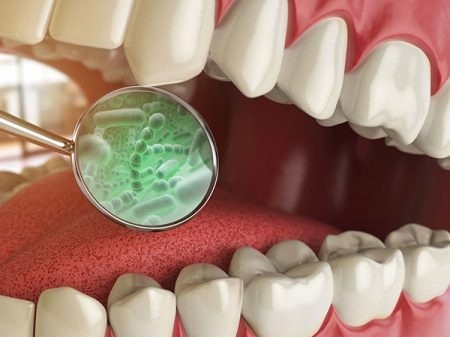From the discomfort of plaque buildup on the teeth to the unpleasant condition of halitosis, bacteria play a significant role in oral health.
 A new chemical sensor array detects and inactivates several disease-causing dental bacteria. Image Credit: Maxx-Studio/Shutterstock.com
A new chemical sensor array detects and inactivates several disease-causing dental bacteria. Image Credit: Maxx-Studio/Shutterstock.com
When dental diseases emerge, prompt diagnosis and treatment are essential. However, identifying the specific microorganisms responsible for an infection often proves to be a time-consuming and costly endeavor.
In a recent study published in ACS Applied Materials & Interfaces, researchers have developed a chemical sensor array, commonly referred to as an artificial tongue, capable of distinguishing various types of dental bacteria and effectively deactivating them.
Finding the source is the first step in treating dental diseases like cavities or periodontitis that are thought to be caused by bacteria. Conventional techniques for detection and identification may include sophisticated equipment-based culturing or searching for particular DNA markers that belong to various species.
Na Lu, Zisheng Tang, and their colleagues sought to explore a cost-effective and straightforward alternative: sensor arrays referred to as electronic or artificial tongues. Previous iterations of artificial tongues have demonstrated the ability to detect and quantify various types of bacteria, akin to the multifaceted sensory function of a real tongue in discerning multiple flavors simultaneously.
The researchers aimed to augment this capability by incorporating the ability to mitigate or deactivate the identified dental bacteria.
The researchers used iron oxide particles coated in DNA strands to create nanozymes, which are microscopic particles that resemble natural enzymes. The presence of enzymes caused a colorless indicator to turn bright blue when hydrogen peroxide was added to a solution. But bacteria that stuck to the DNA reduced the reactivity of the nanozyme, lessening the amount of blue color produced.
To associate each type of bacteria with a distinct shift in color signals, the researchers coated nanozymes with distinct DNA strands. In order to test the DNA-nanozyme system as a substitute for a tongue, the researchers generated dental bacteria samples from eleven different species.
The sensor array detected every type of bacteria present in synthetic saliva samples. Subsequently, the researchers were able to determine whether a dental plaque sample originated from a cavity-ridden individual or from a healthy volunteer using the DNA-encoded nanozyme sensor array.
Furthermore, the DNA-encoded nanozyme sensor array exhibited antibacterial properties against the tested dental bacteria species. When compared to control samples lacking the nanozymes, three common bacterial species were rendered inactive in solutions containing the nanozyme system.
Analysis through scanning electron microscopy revealed evidence suggesting that the nanozyme system disrupted the bacterial membranes. The researchers propose that this sensor system holds potential for future applications in the diagnosis and treatment of bacterial dental diseases.
Source:
Journal reference:
Zhang, L., et al., (2024) Enhanced “Electronic Tongue” for Dental Bacterial Discrimination and Elimination Based on a DNA-Encoded Nanozyme Sensor Array. ACS Applied Material Interfaces. doi.org/10.1021/acsami.3c17134